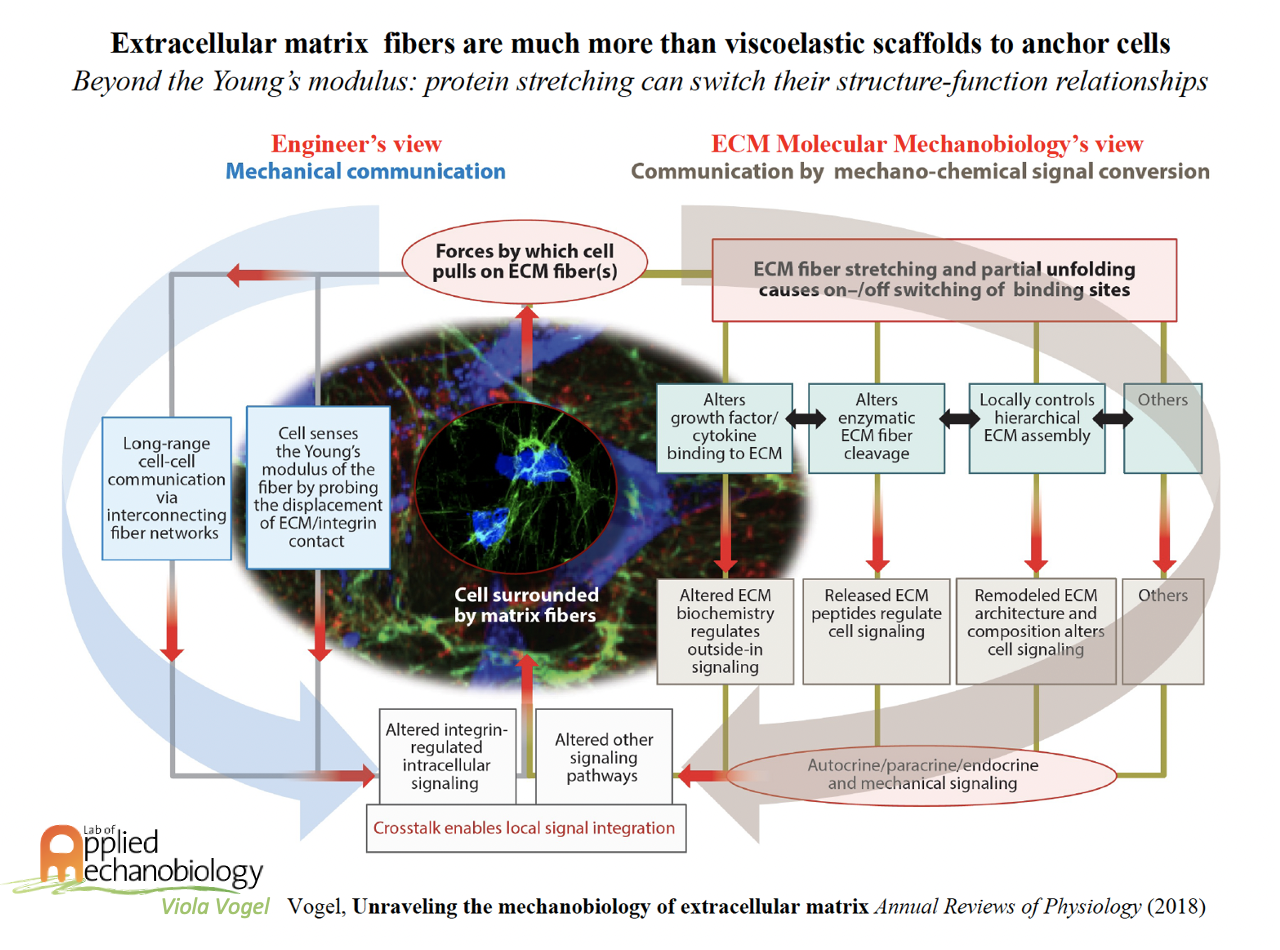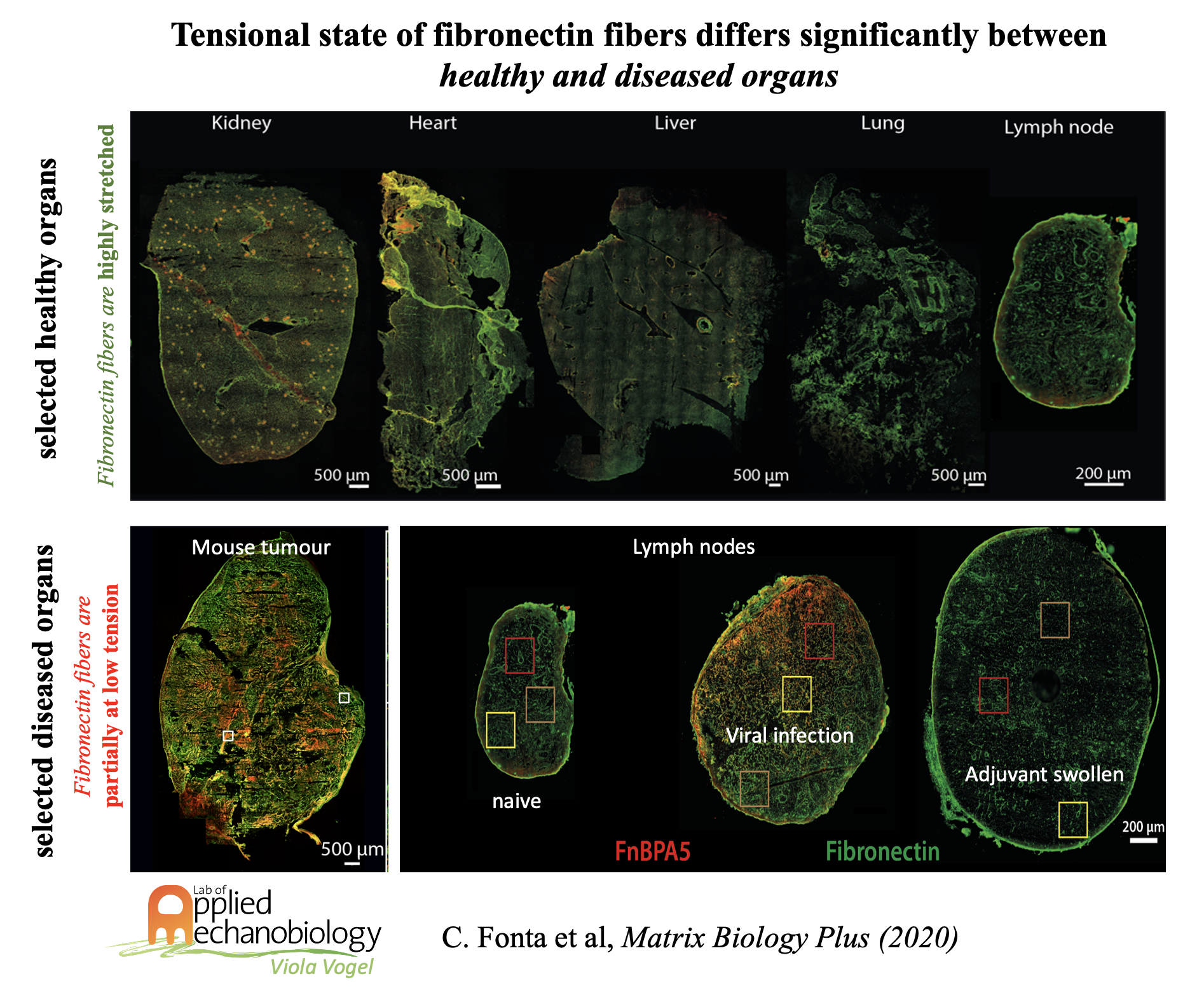Mechanobiology of Extracellular Matrix in Health and Disease
Cells in our body exist in a complex environment: they live in communities with other cell types, embedded in a dense network of fibrillar extracellular matrix (ECM) components that provide anchorage but also serve as reservoirs for soluble factors. Traditionally, researchers have turned to altered cell phenotypes to understand the pathobiology of diseases, while attributing little effect to the surrounding ECM niche. However, we are convinced that the ECM is more than a mechanical substrate for cells, as an increasing body of knowledge has started highlighting the active role of the ECM and its mechanobiology in disease progression.

Research into factors that drive cancer progression and fibrotic pathologies has taken a cell centric few in the last decades, mostly ignoring the reciprocal crosstalk of cells with their diseased extracellular matrix (ECM). Consequently, there is an urgent need to understand the reciprocal crosstalk between cells and their (diseased) ECM. We thus developed nanoscale sensors that allowed us to map the tensional state of ECM fibers in cell culture, as well as at the tissue level ex vivo and in vivo, and explored how the reciprocal crosstalk with cells might impact tissue functions. We thereby applied our peptide tension sensor, as discovered in 2016, to show for the first time that the extracellular fibronectin fibers are highly stretched in healthy organs, but structurally relax in cancer, fibrosis and other inflammatory-induced pathologies. We are now mapping how ECM fiber tension impact the resident cells, and are preparing to launch a start-up company (Tandem Therapeutics lead by Dr. Mamta Chabria).

Key papers:
- Vogel, V., & Sheetz, M. (2006). Local force and geometry sensing regulate cell functions. Nature reviews Molecular cell biology, 7(4), 265-275.
- Yalak, G., & Vogel, V. (2015). Ectokinases as novel cancer markers and drug targets in cancer therapy. Cancer medicine, 4(3), 404-414
- Fonta, C. M., Arnoldini, S., Jaramillo, D., Moscaroli, A., Oxenius, A., Behe, M., & Vogel, V. (2020). Fibronectin fibers are highly tensed in healthy organs in contrast to tumors and virus-infected lymph nodes. Matrix biology plus, 8, 100046.
